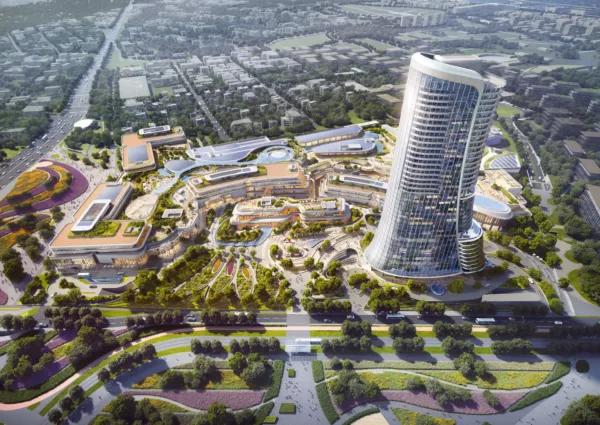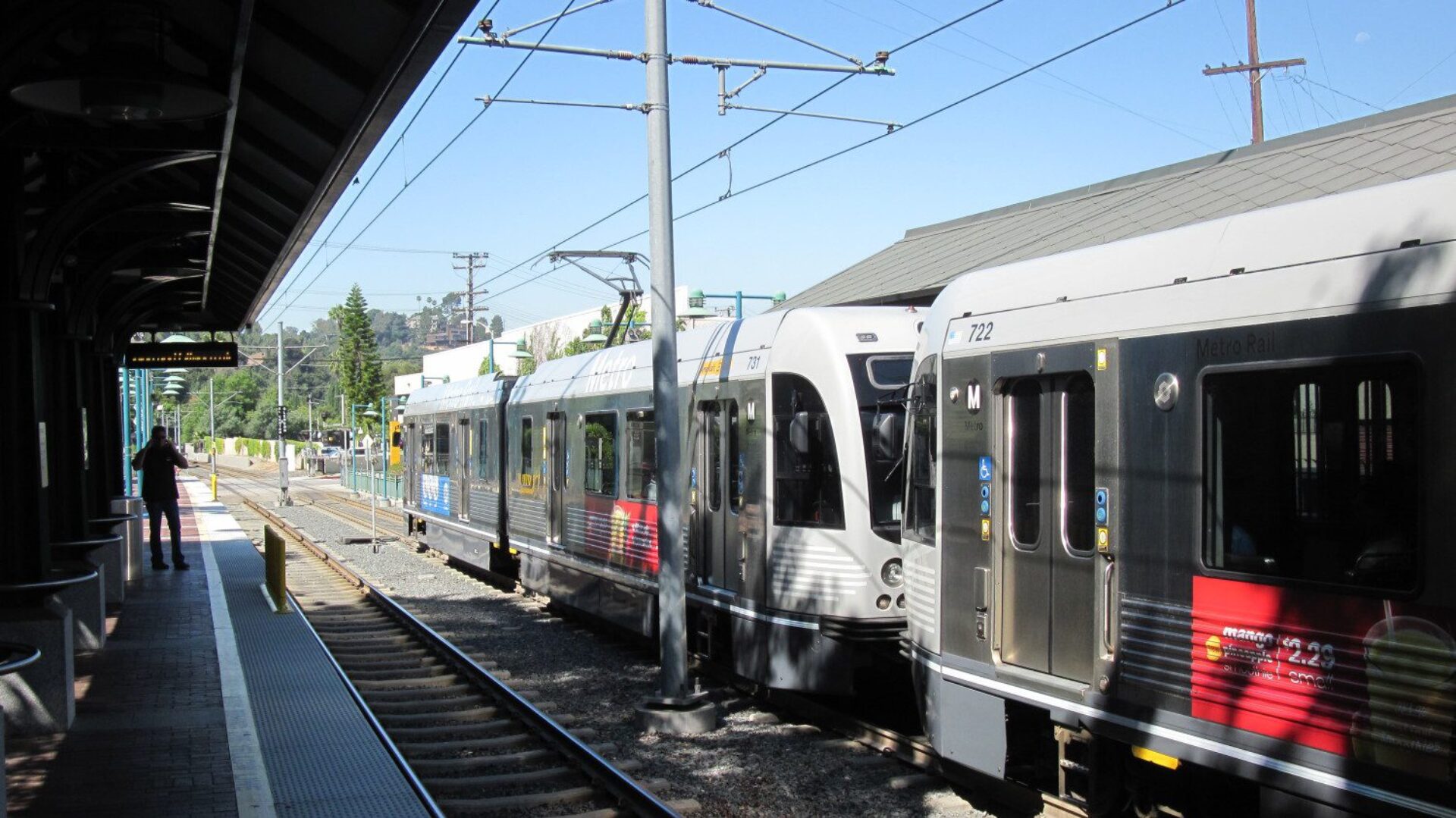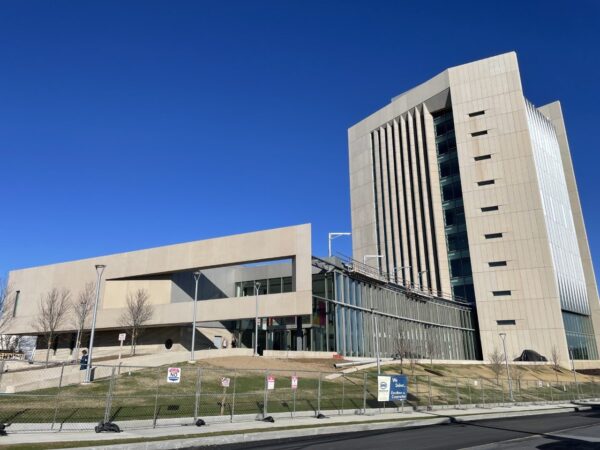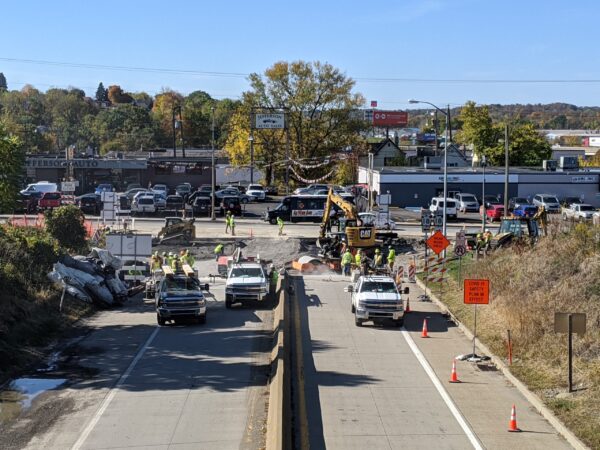

Design is nearing substantial completion for the baseline Phase 2B of the Metro Gold Line Foothill Extension Construction Authority’s Gold Line Light Rail Program, and construction is well underway on the program’s 9.1 mile alignment extension through the cities of Glendora, San Dimas, La Verne, and Pomona, CA. To help maintain this success, the Construction Authority recently extended Hill International’s contract to provide program management services for the Extension. “We’re excited to continue supporting the program,” says Hill Vice President Reky Hiramoto, “and we’re all happy about where things are currently. In the 12 years Hill has been supporting this program, COVID-19 constituted what was probably one of the most significant challenges. Fortunately, the Construction Authority has put together a great team, and Hill’s program controls support has helped keep everyone’s efforts on track.”
A Strong Legacy
Hill has been managing the program since 2009, providing expertise in design, construction, quality control, project controls, and third-party management. Hill professionals like Hiramoto function as an extension of the Authority’s staff, working in key roles to manage the planning, design, and construction of the Light Rail Program’s many elements.
Initially, Hill supported Phase 2A of the program, an 11.5 mile segment connecting Sierra Madre Villa Station in Pasadena to Azusa. That phase encompassed three design-build contracts involving bridges, stations, maintenance and operations facilities, trackwork, at-grade crossings, grade separations, parking facilities and other enhancements. With Hill’s support, Phase 2A was completed on time and within budget in 2015 and extended Gold Line service to the cities of Arcadia, Monrovia, Duarte, Irwindale, and Azusa.
Overall, Phase 2B will extend the Gold Line a further 12.3 miles, adding six stations from Glendora to Montclair. Due to increased construction cost realized during the competitive bidding process and available funds, the baseline design-build contract was executed in late 2018 covering Glendora to Pomona, and with a two-year contract option to extend into Claremont and Montclair.
The total program—approximately $3.5 billion and 24 miles—will conclude with the completion of the next sub-phase in 2028, connecting Los Angeles County to San Bernardino County and providing a sustainable and efficient transit link between Los Angeles and its northeastern suburbs. Despite the successes that Hill and the Construction Authority have already had with the Light Rail Program, as well as the more-optimistic COVID-19 outlook, the path forward will have its challenges.
Maintaining Momentum with a Proven Program Management Approach
“To give you a closer look at where we are: design for baseline Phase 2B is more than 90% complete,” says Vice President William Reagan, who serves as Director of Construction for the Phase 2B project. “Major construction of the project started in July 2020. Since then the design-builder has already built or reconstructed nine at-grade crossings. Five are currently under construction and nine more will begin construction soon. Construction will also begin for several grade separation structures this summer. Through it all, we’re keeping track of the program management plan, coordinating with stakeholders, reviewing the quality program, and providing program controls. This helps the Construction Authority oversee all aspects of the project and helps the design-builder streamline their efforts.”
Construction of the at-grade crossings and grade separation structures is a highly orchestrated and complex process along the corridor. In total, 23 crossings will be reconstructed. “Each crossing offers a barrage of challenges,” Reagan explains. “Phasing, routing detours and planning for traffic, utility relocations by the design-builder and third-party utility owners, freight track shifts, outreach to the local community, and getting approvals from the relevant jurisdiction—it’s a lot to manage and requires partnership from all stakeholders involved.”
Fortunately Hill’s program management services account for the complexities of horizontal infrastructure. In particular, Hill’s program controls provide the Construction Authority foresight and flexibility: foresight in the structured procedures for the early identification, analysis, and resolution of problems as they arise; and flexibility in managing any resultant changes and their impact on the project’s schedule and cost. Hill also relieves the Construction Authority of the burden of coordinating with the many entities involved. This helps keep everyone from city decision makers to utility companies accountable to the overall program.
Plus, Hill has been providing these services to the Construction Authority for 12 years. “Our priority, no matter what program management assignment we’re on, is to successfully integrate with the owner’s team,” says Hiramoto. “And our teams are really in sync at this point. So we understand the Construction Authority’s needs and management style and can always act confidently on their behalf.”
The Infrastructure of Tomorrow
With the American Jobs Plan on the horizon, there has been much talk about America’s infrastructure. Whether that conversation is about repairing state highways or adding smart infrastructure to ports, all agree on the importance of light rail to the nation’s future. The American Rescue Plan demonstrated the Biden administration’s commitment to the health of the nation’s transit with more than $30 billion allocated to transit agencies around the country. Where the Rescue Plan dedicated money to keeping Americans in transit employed, however, the Jobs Plan will allow agencies to pump much-needed funds into capital improvement projects.
“Transit provides the best way of combatting mass traffic,” explains Hill First Vice President John Skoury. “It’s also one of the greenest ways to get people where they need to go. That helps states like California reach their goals to reduce carbon output, and helps combat climate change in general. So as long as a green future is a priority, we’re going to see continued stress placed on light rail infrastructure.”
Skoury goes on: “In the wave of transit upgrades and expansions we’re going to see following the American Jobs Plan, I think departments of transportation and other transit agencies around the country are going to look to the Foothill Gold Line Light Rail Program as a model for executing their own work. The team is that strong and the program is that good. And I’m proud to say that Hill continues to play a part in its success.”
Share

April 11, 2024 | Articles
A Model Move: Managing Move-In at the Sylvia H. Rambo U.S. Courthouse

April 8, 2024 | Articles

April 4, 2024 | Articles
Driving Growth and Seizing Opportunity: Lukasz Marcinkiewicz Joins Hill as Country Manager, Poland

April 1, 2024 | Articles

March 27, 2024 | Articles
Building the Future: Women’s Leadership and Community Engagement in the Construction Industry

March 25, 2024 | Articles
Leveraging Data Analytics and Dashboards for Enhanced Project Performance

February 26, 2024 | Articles
Continuity, Creativity, and Collaboration: Delivering PennDOT’s Route 18 Signal Upgrade
We and use cookies and other tracking technologies to improve your experience on our website. We may store and/or access information on a device and process personal data, such as your IP address and browsing data, for personalised advertising and content, advertising and content measurement, audience research and services development. Additionally, we may utilize precise geolocation data and identification through device scanning.
Please note that your consent will be valid across all our subdomains. You can change or withdraw your consent at any time by clicking the “Consent Preferences” button at the bottom of your screen. We respect your choices and are committed to providing you with a transparent and secure browsing experience.
| Cookie | Duration | Description |
|---|---|---|
| cookielawinfo-checbox-analytics | 11 months | This cookie is set by GDPR Cookie Consent plugin. The cookie is used to store the user consent for the cookies in the category "Analytics". |
| cookielawinfo-checbox-functional | 11 months | The cookie is set by GDPR cookie consent to record the user consent for the cookies in the category "Functional". |
| cookielawinfo-checbox-others | 11 months | This cookie is set by GDPR Cookie Consent plugin. The cookie is used to store the user consent for the cookies in the category "Other. |
| cookielawinfo-checkbox-necessary | 11 months | This cookie is set by GDPR Cookie Consent plugin. The cookies is used to store the user consent for the cookies in the category "Necessary". |
| cookielawinfo-checkbox-performance | 11 months | This cookie is set by GDPR Cookie Consent plugin. The cookie is used to store the user consent for the cookies in the category "Performance". |
| viewed_cookie_policy | 11 months | The cookie is set by the GDPR Cookie Consent plugin and is used to store whether or not user has consented to the use of cookies. It does not store any personal data. |


